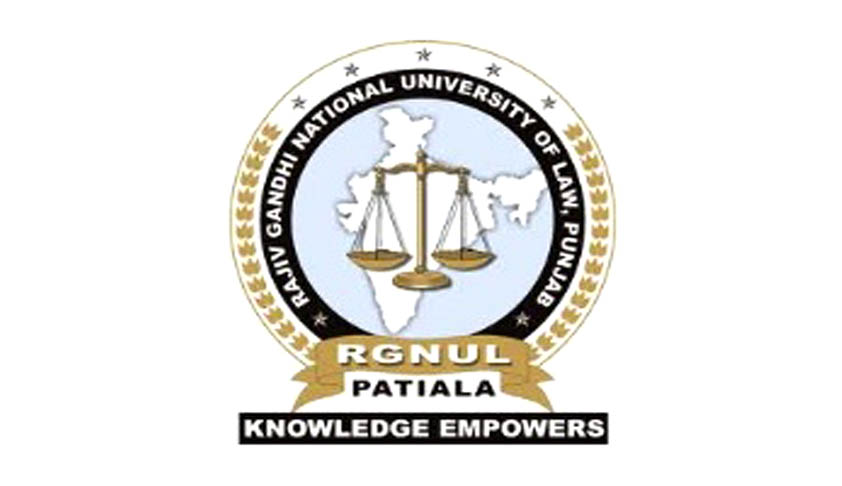![]() Abhinav Sekhri
Abhinav SekhriThe Criminal Procedure Code 1973 [Cr.P.C.] was subjected to significant amendments in 2009. The law on arrest was drastically altered following Supreme Court admonition, and victims were given a real foothold in the criminal process for the first time. Amidst all this, a provision was added to the section on Bail in the Cr.P.C.: Section 437-A. What does it say?
Before conclusion of the trial and before disposal of the appeal, the Court trying the offence or the Appellate Court, as the case may be, shall require the accused to execute bail bonds with sureties, to appear before the higher Court as and when such Court issues notice in respect of any appeal or petition filed against the judgment of the respective Court and such bail bonds shall be in force for six months [Section 437-A(1)]
Through this post, I will try and convince the reader that Section 437-A Cr.P.C. is unconstitutional. The post first cursorily explains the concept of bail and engages with the problematic consequences flowing from the text of Section 437-A. It then discusses the origins of the provision, before moving on to argue that it is contrary to Articles 14, 19, and 21. The last section considers that there are two options, reading down Section 437-A or striking it down completely, and I support the latter course.
Understanding Bail and the Text of 437-A
One often comes across “bail” in context of criminal trials and investigations. What does this mean? In such scenarios (and others), where a person is in the crosshairs of the legal system, the law wants to ensure that legal proceedings are not frustrated by persons fleeing the jurisdiction. An obvious way to address this is to arrest everyone. But that is hardly proportionate to the needs of law enforcement and is far too heavy a strain on State resources.
Bail is the answer to this problem. The person is notionally still in the custody of the court and not at liberty, but is not actually in fetters. Note, that as the law would always need a guarantee of personal appearance, all defendants once in the crosshairs of the system are either on bail or in custody. How does it ensure appearance when required? By imposing certain conditions while releasing the person, chief among which is a requirement to appear in court or before the police. Non-compliance with the conditions is met by the threat of arrest, often along with a threat of imposing financial consequences such as forfeiture of property to the State. The financial threat often extends to other persons called “sureties”, who are thus incentivised to ensure the defendant does not flee.
Now, consider the text of Section 437-A Cr.P.C. It is very broad: the court shall require bail bonds, with sureties, before conclusion of trial and disposal of appeal. This throws up a bunch of questions. First, does it mean that the court will not proceed with the trial or appeal before getting such bail bonds? Second, if the court does proceed with the trial / appeal and finds the defendant innocent, would she then remain in custody if she cannot find sureties or comply with the other conditions imposed for bail?
Section 437-A Cr.P.C. allows for both of these eventualities. And it is for this reason that the High Courts of Bombay, Allahabad, and Himachal Pradesh have clarified that courts within their jurisdiction must not apply the provision in a way that causes either of these results to follow. There will be some states that I have missed, but I am certain that there are many others where no such clarification exists today. Nor has any guidance been issued by the Supreme Court, and so, it is very possible that both of these problematic outcomes are being seen across the country. From here on, this post will focus on the second of the two outcomes: the continued detention of persons acquitted of all charges for their failure to post adequate bail bonds.
The Genesis and Object of Section 437-A
I mentioned that the guidelines issued by certain High Courts curbed certain uses of Section 437-A Cr.P.C. but have not yet explained how they wanted the provision to be applied. The Courts suggested that the provision is a means to ensure that an acquitted person is available to contest any eventual appeal by the State, and so the bail bonds should only be required at the end of a trial before judgment. They also suggest that bail might be given without sureties if an acquitted person cannot find sureties.
The history of Section 437-A supports this reading. Before it was added to the Cr.P.C. in 2009, the only other provision dealing with a need to detain persons pending an appeal against acquittal was Section 390 Cr.P.C. This empowers the appellate court to detain persons pending an appeal against acquittal, if it is convinced that of the threat of them evading the legal process. But in this scheme there still exists a period between the acquittal and appeal when a scheming defendant could still flee and frustrate the State’s appeal. Taking note of this (and abortive attempts by the Gujarat High Court to fill the gap) the Law Commission in Report No. 154 of 1996 recommended insertion of a Section 437-A Cr.P.C. Why? It said that the Cr.P.C. was “silent on the point of securing attendance” during an appeal, and there had been instances where appeals against acquittals were delayed or dismissed due to this failure in securing attendance.
Two problems are immediately apparent here. First, the Law Commission said that the Cr.P.C. was “silent” on securing attendance for appeals but did not even look at Section 390 Cr.P.C. which did cater to this need, albeit differently. Second, the bogey of appeals against acquittals being dismissed was raised without any empirical data about how many such dismissals happened and why. For instance, if the prosecution filed an appeal years after acquittal (as it often does) and then failed to find the original defendant, then it is rather unreasonable to claim that a person fled or frustrated the appeal and piggyback on the dismissal of the appeal to create a perceived need for Section 437-A.
Importantly, the Law Commission acknowledged that this measure might be challenged under Article 21 of the Constitution. Its basis for concluding that the proposal was constitutional was simple: the Cr.P.C. allowed appeals against acquittals, and so seeking bail bonds till the limitation period for filing an appeal subsisted was not a “restraint” on personal freedom. Further, proposed Section 437-A was eminently reasonable where it involved no “restriction of liberty or his freedom of movement”.
When Section 437-A Cr.P.C. was ultimately passed by Parliament, there were two big changes from the suggested draft in Report No. 154. The final version of Section 437-A said that a court shall require bonds while the draft version did not make it a mandatory requirement. At the same time, the final version only needed the bail bonds for six months, down from the one year period that the Law Commission had suggested.
Unconstitutional Fetters on Personal Liberty
Practically, Section 437-A Cr.P.C. does not make much of a difference to defendants already out on bail during trial. In such situations, it is easy to extend the period of that bail bond for six months after acquittal by changing the form of the bail bond. But Section 437-A works very differently for those defendants who are in actual custody, unable to post bail by finding sureties or complying with any financial conditions that a court might impose. It is only for these persons that the two scenarios highlighted earlier – delayed trial and delayed effect of acquittal – are possibly realised.
On the face of it, Section 437-A Cr.P.C. though seemingly neutral, is very selective in its impact and discriminates against one class of persons. The classification that it effects is purely built on levers of wealth, influence, and privilege, rather than pursuit of the object behind Section 437-A (perhaps they indirectly affect that object, at best). The effect of this discrimination is to deprive such persons of their right to life under Article 21 of the Constitution, by not only possibly denying a trial itself, but more importantly, by not allowing them to enjoy the liberty that is the natural concomitant of an acquittal. Thus, Section 437-A in its present form offends the equality guarantee of Article 14.
Actual confinement of a citizen after acquittal obviously curtails the freedom of movement that she is guaranteed under Article 19(1)(d). But both the legal and actual fetters on personal liberty curtail the fundamental right that Article 21 protects. Which means we must consider whether Section 437-A Cr.P.C. is protected by the tests governing restrictions of these fundamental rights.
Section 437-A Cr.P.C. contains no sense of proportionality. It does not require the State to satisfy a court that an acquitted persons might possibly flee to avoid the appeal. Nor does it require the State to show that a person, if immediately released, will pose a threat to public safety. Instead, the provision demands every acquitted person to remain in custody of the court despite till the State can make up its mind about pursuing an appeal. Thus, the rights under Articles 19(1)(d) and 21 are rendered subservient to administrative convenience, pure and simple. And this after a person is declared “not guilty”, after a full-length trial or appeal.
Reading Down vs. Striking Down
No wonder those High Courts which have recommended that personal bonds be taken are effectively reading down the text of the provision (supported in this paper too, which discusses other issues with the provision). The constitutional problems in giving Section 437-A Cr.P.C. its fullest expression are obvious, and even the Law Commission in 2017 also suggested a relook is now necessary. But here, I argue that reading down cannot save the provision and it must be struck down altogether.
First, a question of means. Saving Section 437-A Cr.P.C. does not involve merely filling in gaps or creatively interpreting the text. It involves actively re-writing it, and that is something courts cannot do. The requirement that a court “shall” take bonds with sureties will be re-written as something it “may” do. Further, the scope of discretion is altered not to allow a court to forego the demand for bail bonds altogether, but to insert the words “personal bond” in Section 437-A to change the kind of bail bonds that are required.
But far more important is the question of principles. Section 437-A Cr.P.C. must be struck down for it automatically breaks the link between a judgment of acquittal and its legal effects, in the absence of any appeal preferred by the State. This is perhaps the most problematic part of the provision At one level, it creates a conflict within the Cr.P.C. Today, Section 354(1)(d) Cr.P.C. still states that a judgment of acquittal requires that a court direct the person be set at liberty. Without amending what it means to be acquitted directly, the legislature has indirectly rendered all acquittals subject to a condition of complying with Section 437-A. Can the legislature indirectly alter the very meaning of an acquittal at all stages within our criminal justice system in this indirect fashion? No, it cannot. Because this link between a judgment of acquittal and being set at liberty is protected through Article 21 itself. It cannot be severed, and certainly not to cater to administrative convenience.
Conclusions
Perhaps I am “fetishising” what an acquittal means – after all, it is not final till confirmed in appeal. But that finality is in respect of an acquittal being legally unassailable. It does not make the effects of an acquittal automatically contingent upon the possibility of appeal proceedings. Rather, not treating an acquittal as final allows an appellate court to delay giving it effect. This delay can only occur after giving a full hearing to both sides. Any other position would deprive the verdict of a lower court of all sanctity lest it be confirmed in appeal. Moreover, it would mean that persons are condemned from the date of arrest till their case is resolved by the highest appellate court, and continue to suffer all the collateral consequences of criminal convictions for this unconscionably long period of time as well.
This is why the remedy provided by Section 390 Cr.P.C. makes sense. The state can seek detention of the acquitted person pending appeal if it can show that it is necessary, but the default is still that a person remains at liberty. Moreover, an appeal having been filed gave the court proper jurisdiction to hold someone in custody. What if, after some empirical study, it is found that something like Section 437-A is necessary to prevent persons from fleeing and frustrating appeals? Then, a hearing similar to that under Section 390 is the answer, not a position that changes the default position. If the trial court / appellate court is satisfied of a need to detain after having heard both sides it could pass appropriate orders, with the denial of liberty narrowly tailored to account for how long the State might take to file an appeal rather than simply hold persons in custody for fixed periods.
Under no situation is Section 437-A Cr.P.C. the answer. Parliament cannot pass statutes that deem an entire population to be a suspect class for administrative convenience, even after a court of proper jurisdiction has pronounced them innocent. If this is so, then the guarantee under Article 21 might soon be no better than a fig leaf.
The article was first published here



















